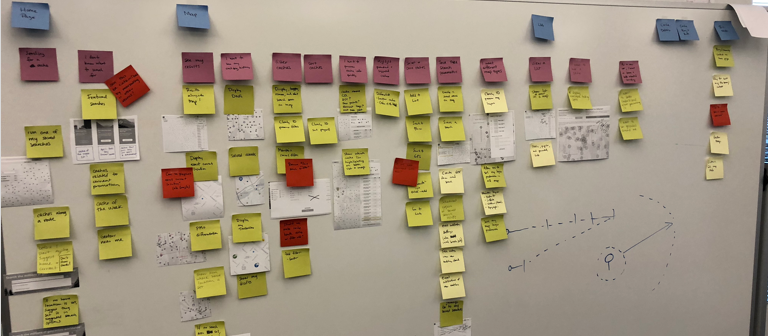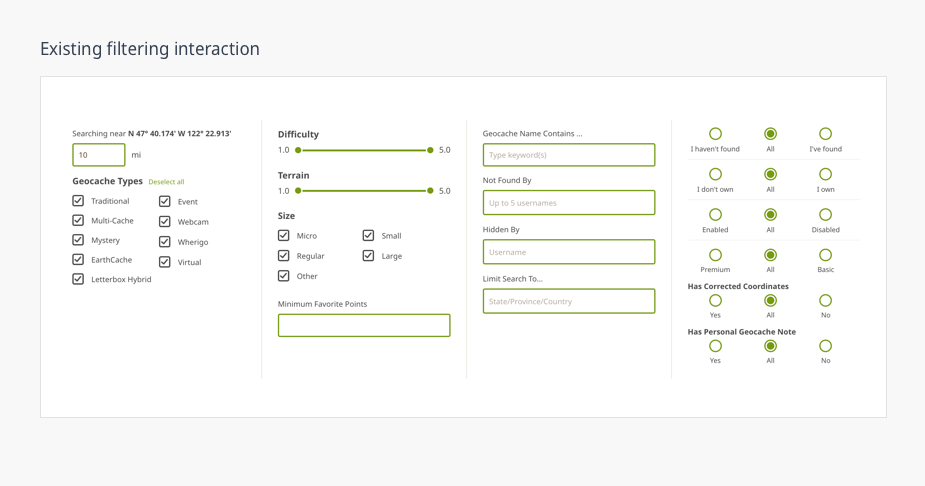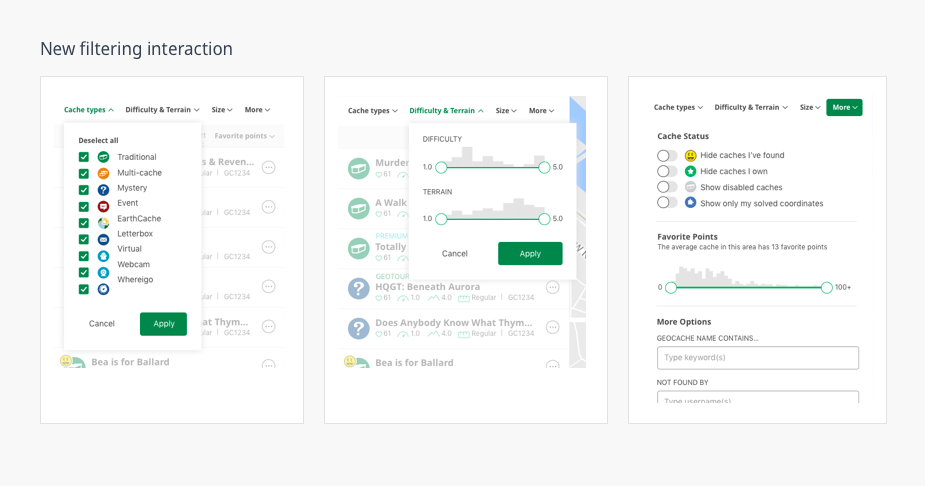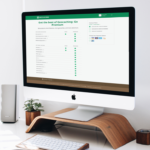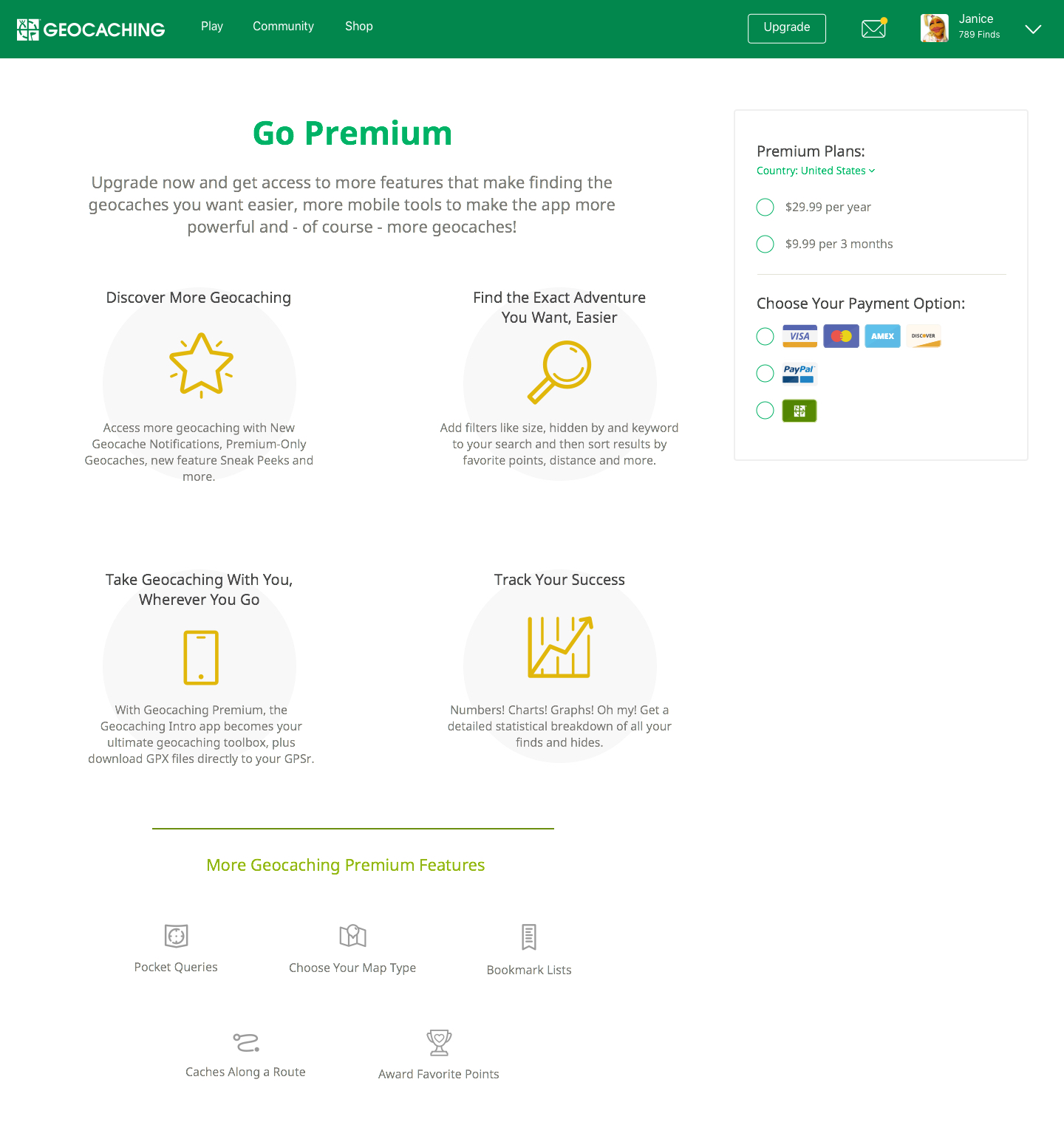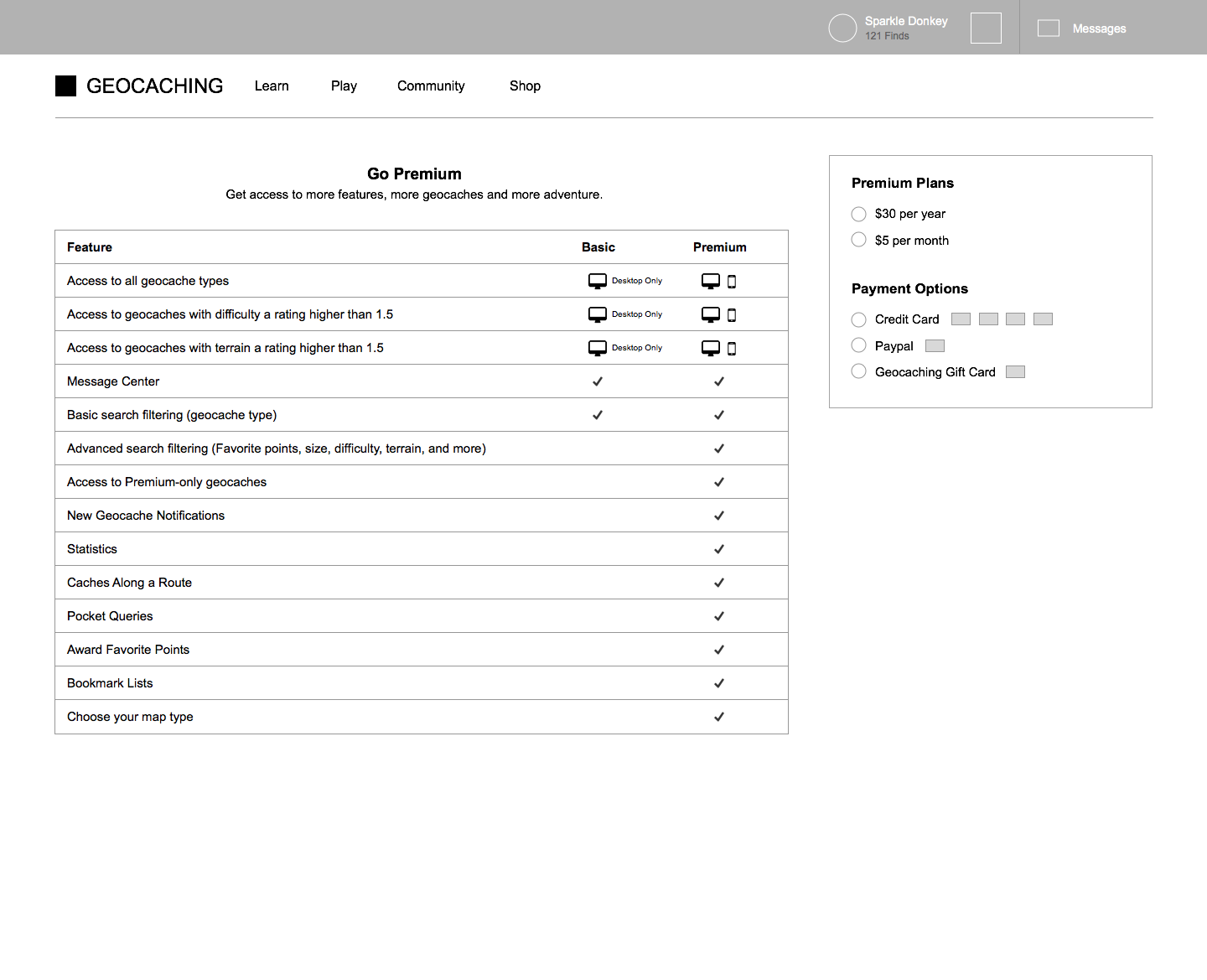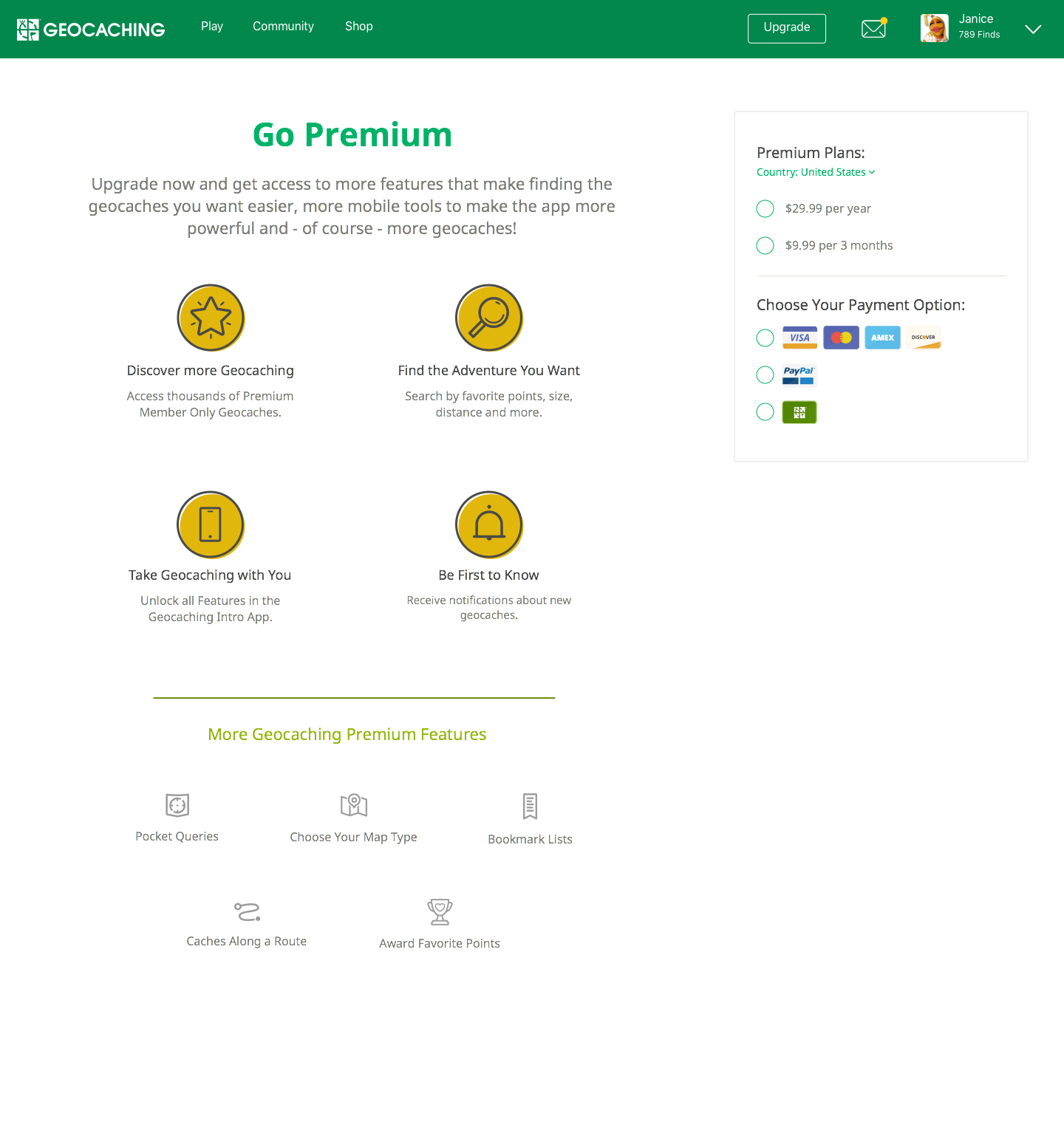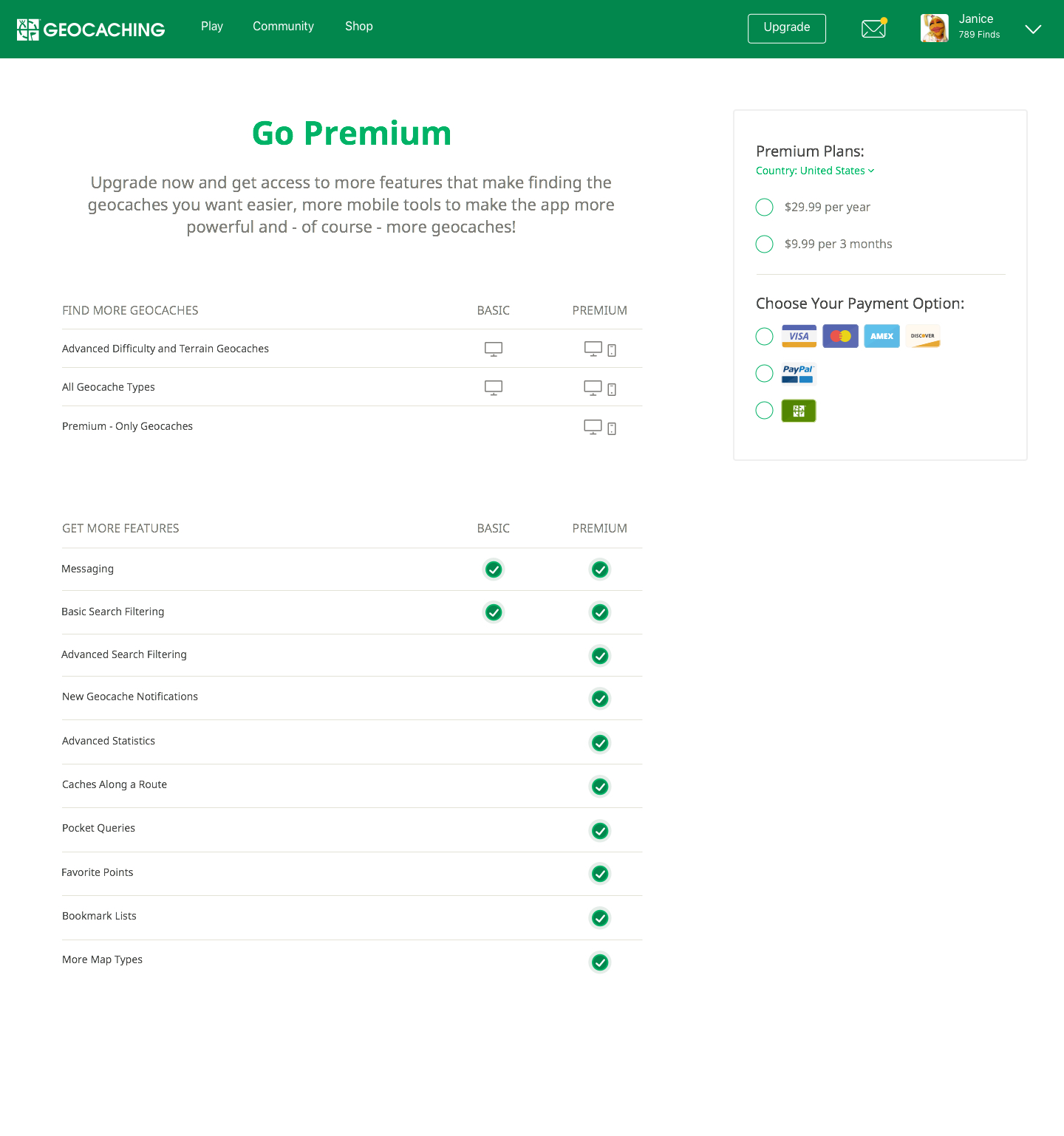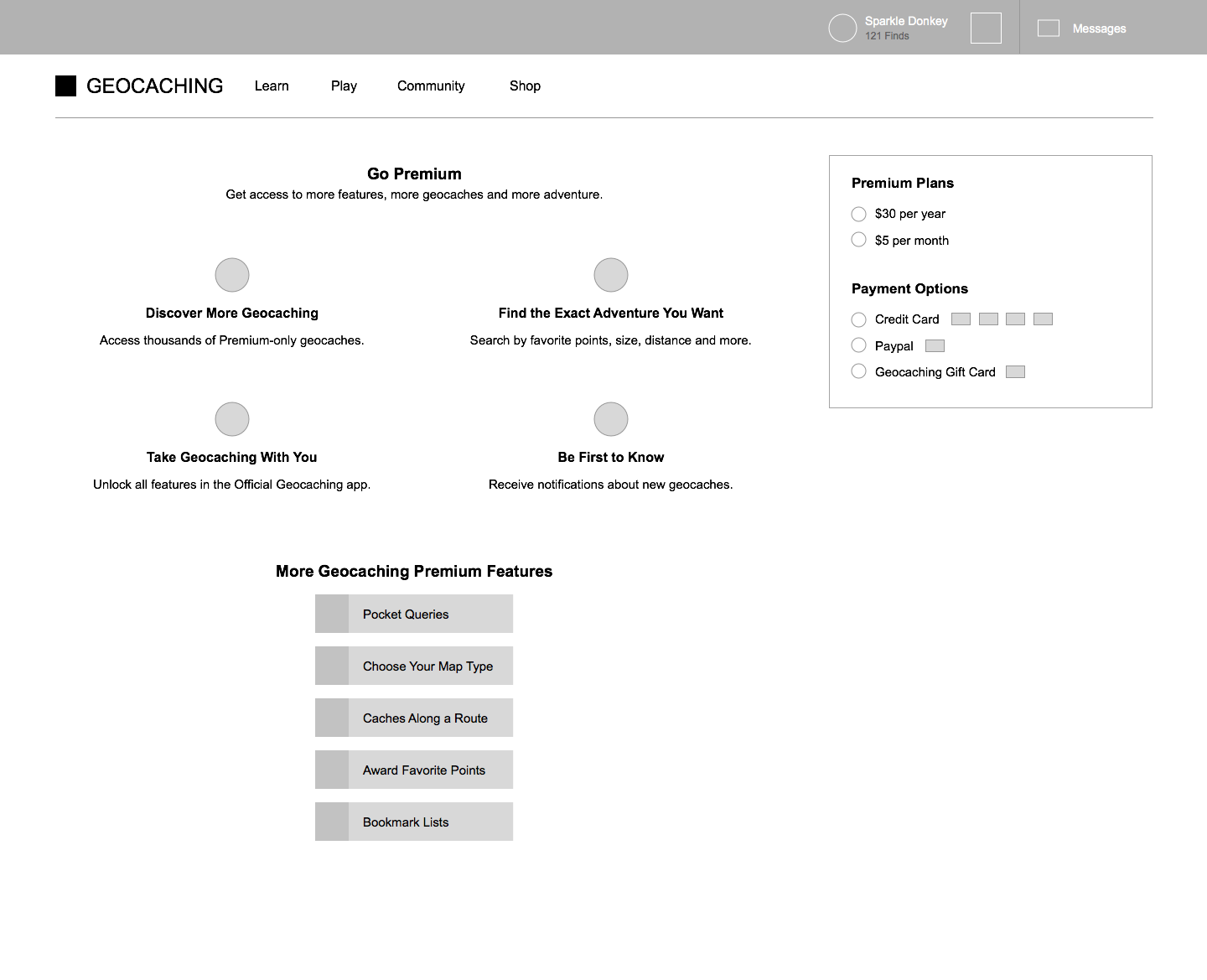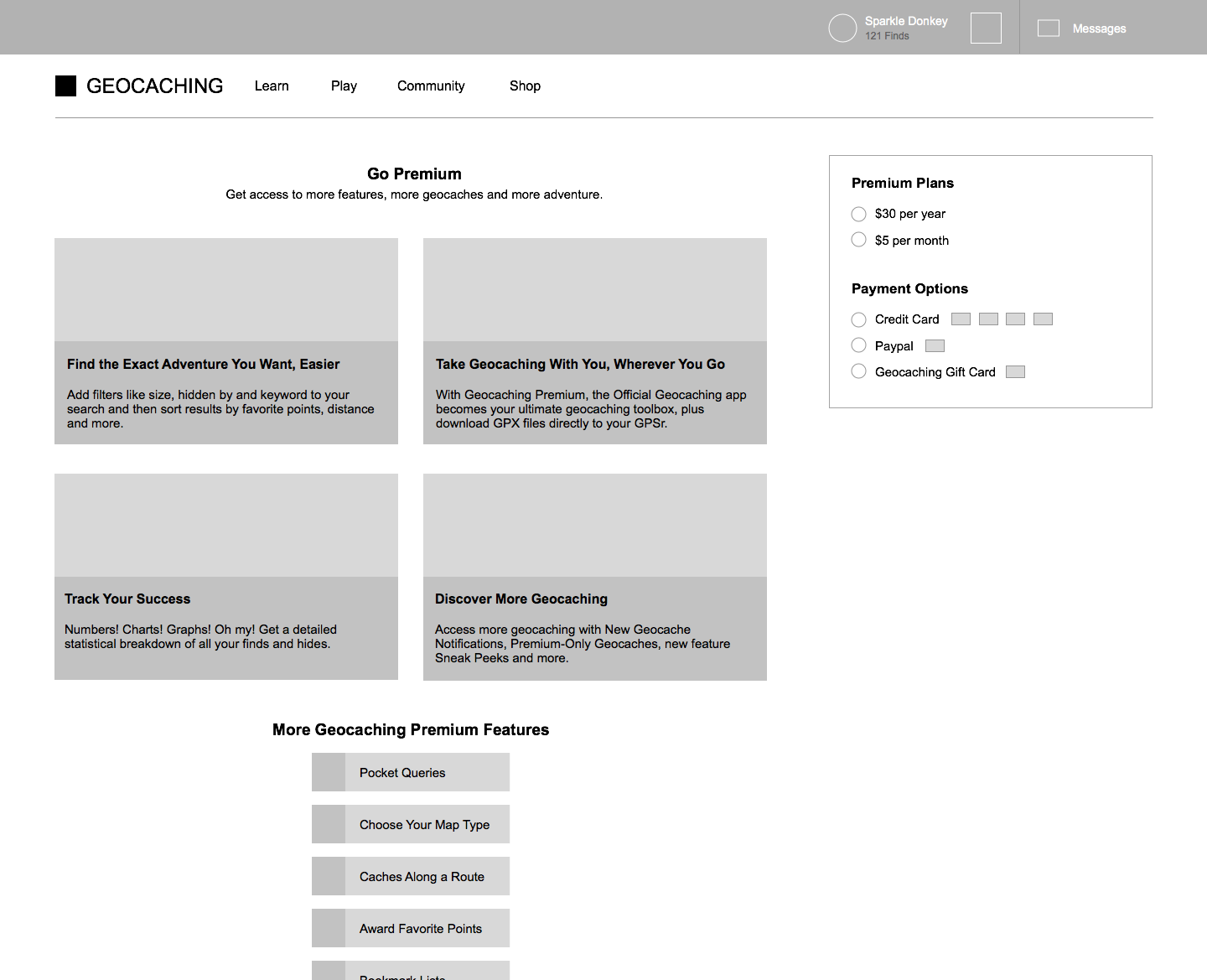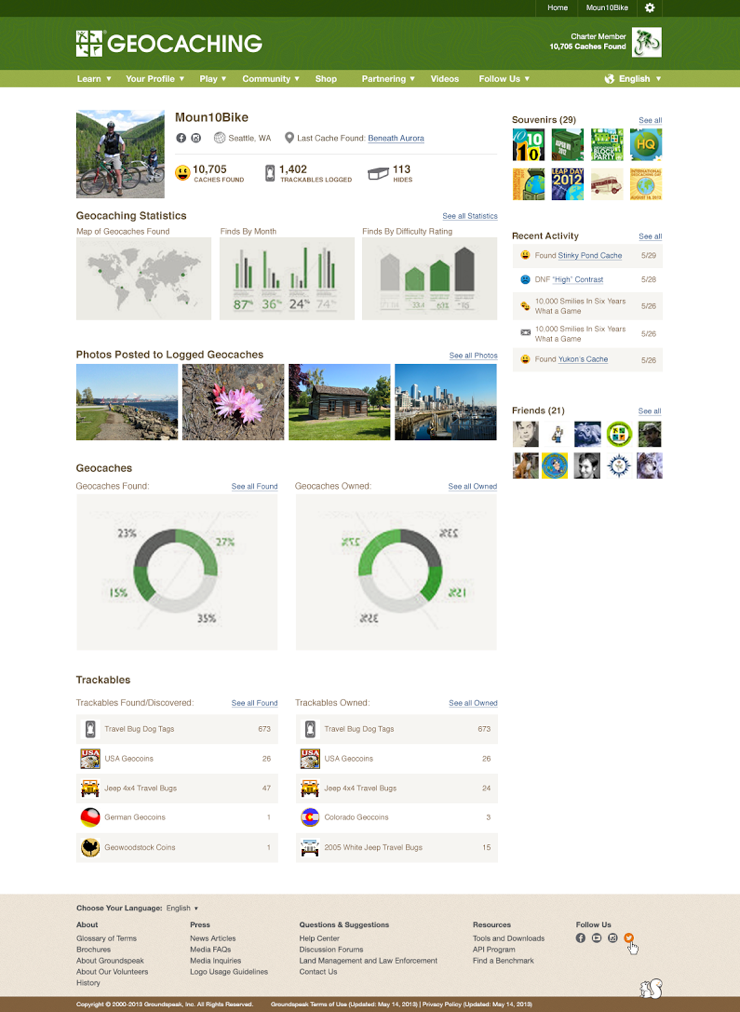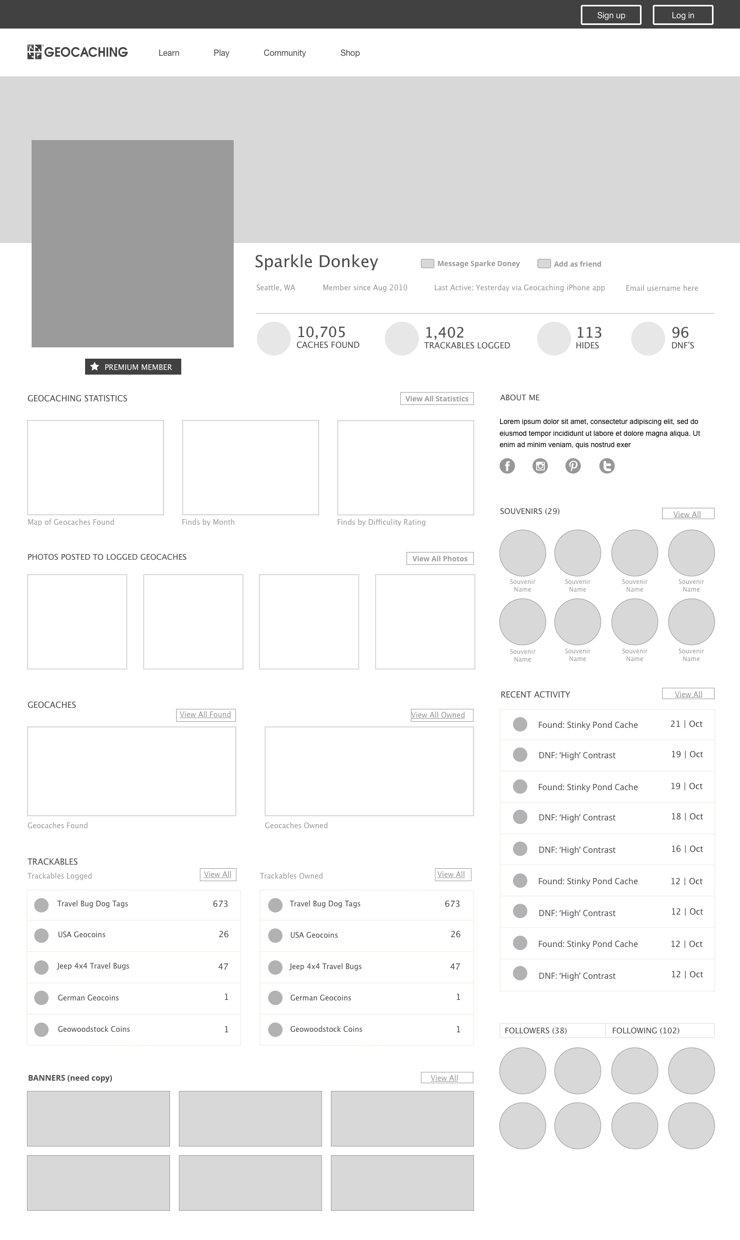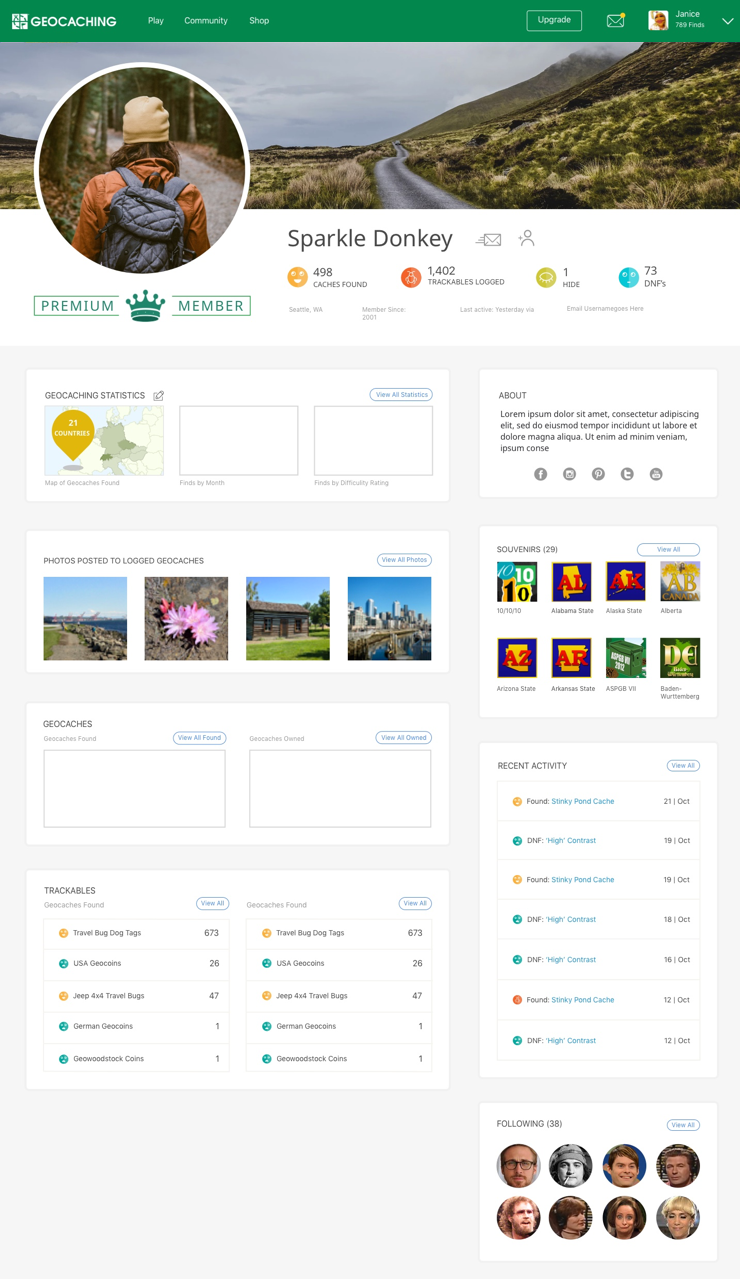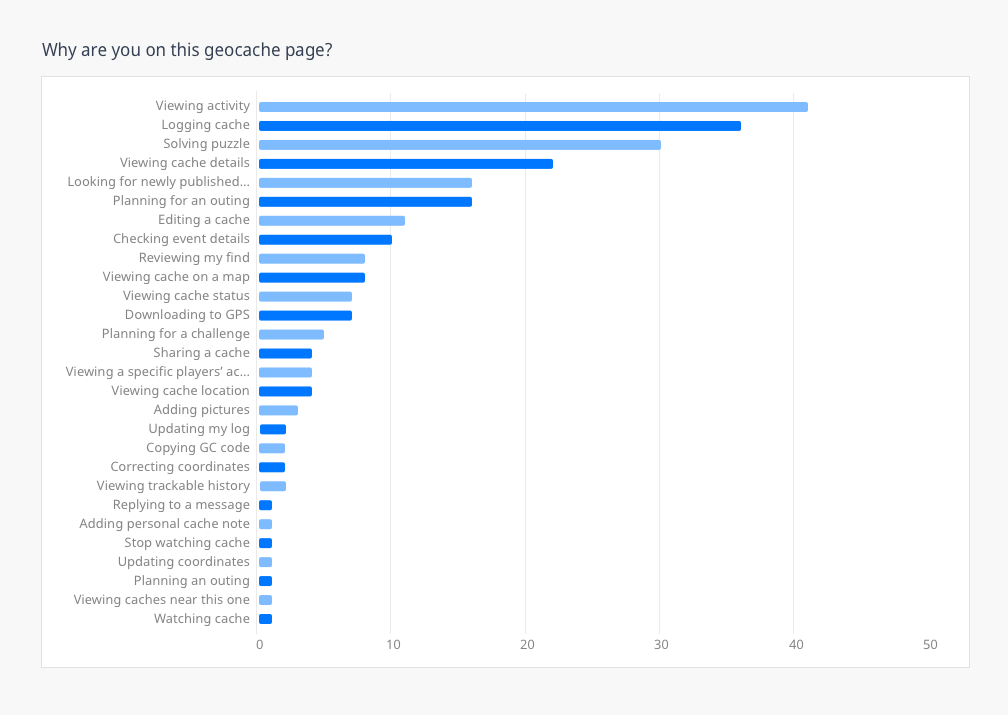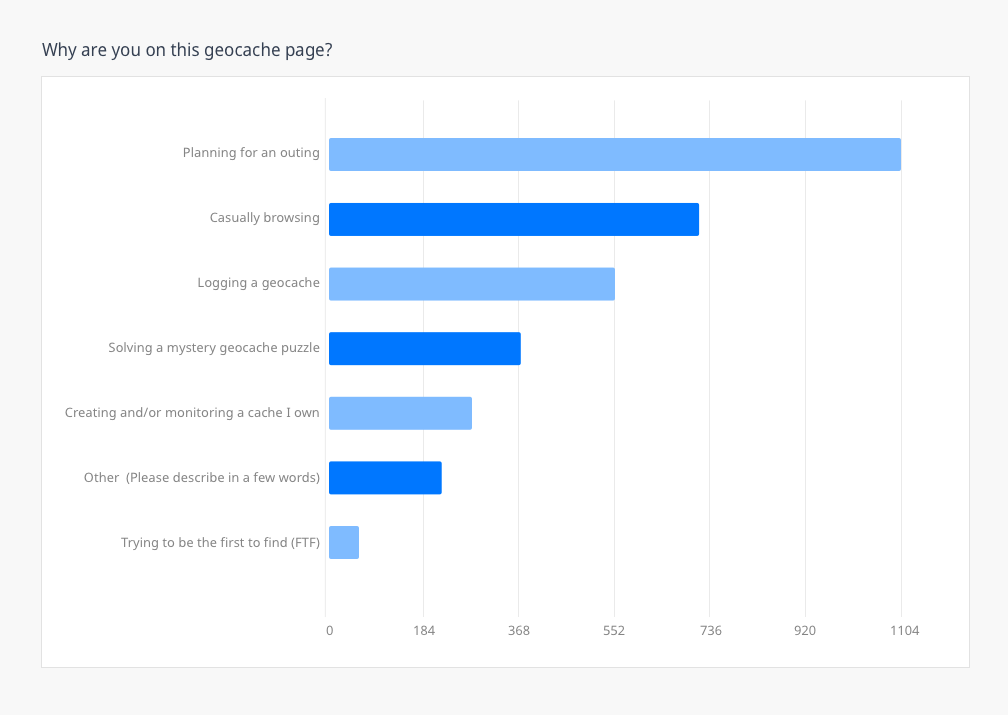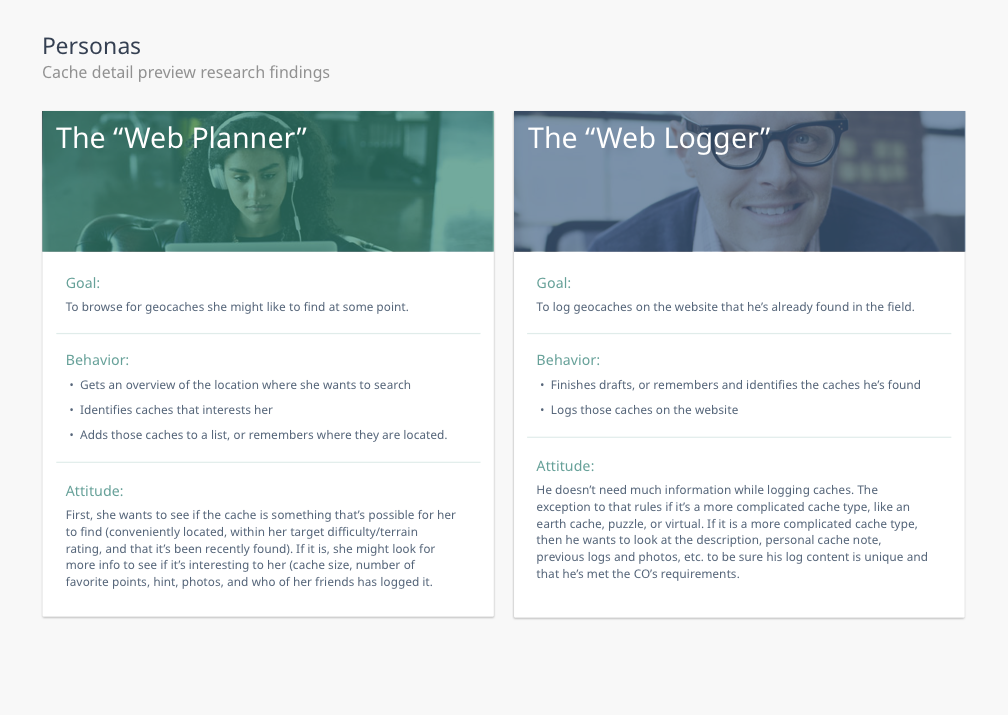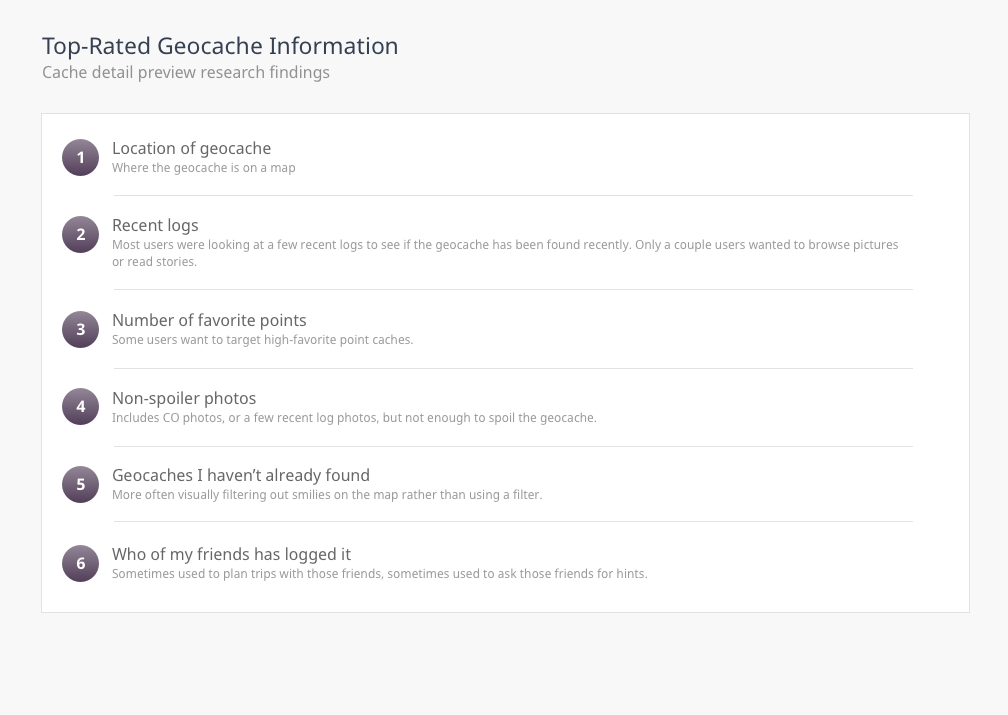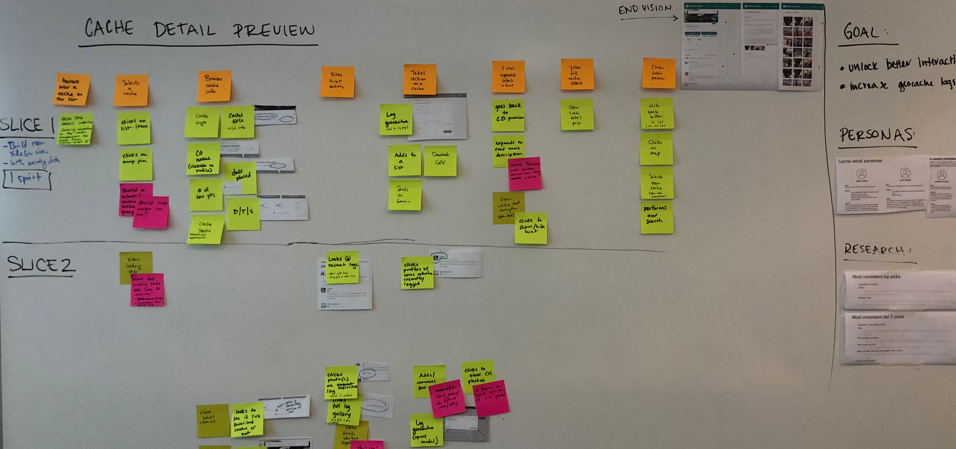
PROJECT OVERVIEW
Before this project, there were 3 ways to search for geocaches on geocaching.com: using a map-only experience, using a list-only experience, and via “pocket queries” (an advanced geocaching search tool). This project was kicked off with the goal of creating a single, intuitive way for players to find geocaches. I worked with the product manager and data team to set a goal of increasing the number of geocache logs submitted by at least 2%.
STAKEHOLDER INTERVIEWS
The product manager and I interviewed key stakeholders throughout the company. We met with members from the marketing, finance, mobile, product, community, and IT departments, which gave us an understanding of the needs for the project, and helped us define who to target our research towards.
USER RESEARCH
I used the information from stakeholder interviews to create a poll for the map and the list-view pages, asking users what they were doing there. I used the most common responses to recruit 2 user groups: “Looking for geocaches to find today” and “Planning for an upcoming outing”
I conducted contextual inquiry interviews with users, and used the data to create 3 personas.

USER STORY MAPPING
I met with the product manager and dev lead to create a user story map, then we met with the entire dev team to slice the project into 5 milestones.
MILESTONE 1: A MAP AND LIST SIDE-BY-SIDE
Milestone 1 was to get a map and list side-by-side. I prototyped and tested 3 solutions that did this, and user tested them to see which was best understood by users. Prototype 3 performed best, so I worked with the development team to implement that solution.
Prototype 1
This prototype featured a geocache preview fixed to the top of the list view.
Prototype 2
This prototype featured an accordion of CTAs that opened below each the selected cache.
Prototype 3
Instead of expanding CTA areas, this prototype had an always-visible overflow menu with CTAs.
MILESTONE 2: SEARCH
Milestone 2 was to implement search functionality onto the map. I did competitive analysis on suggested search functionalities, and worked with the development team as I designed to be sure I was covering all error states and edge cases.

After implementing search, we opened up the new map experience to employees of Geocaching HQ to start collecting early feedback and bug reports.
MILESTONE 3: SORTING & FILTERING
For milestone 3, I worked with the data team to look into which filters were most commonly being used on the existing pages, and used that data to propose that we simplify some filters, and break all of them into more digestible categories.
To help decide the categories, I conducted a card sorting exercise where I asked participants to categorize each of the filters, then used that data to propose an updated filter interaction (below).
At this stage, we opened up the new experience to a selected group of “Play testers” – a hand-selected group of geocachers – to start collecting feedback from real users.
MILESTONE 4: CTA MENU
For milestone 4, I used the test data from milestone 1 to implement an overflow menu to house the CTAs for each cache. A round of usability testing helped us identify some minor improvements, then I worked with the development team to implement.
By this point, we had collected enough user data to start seeing patterns in the feedback. The most common theme in the user feedback was that users didn’t like losing the location context of the map when they clicked on a geocache to see more information about it. Another common sentiment was that users wanted an option to “collapse” the sidebar with list results. Some users didn’t need sorting functionality, and just wanted to browse the map on the biggest screen possible.
I created a proof of contept prototype that addressed both of these issues, and usability tested it. The results were promising, which initiated a separate, but related project: “The geocache detail preview”.
A/B TESTING
At this stage, we had built enough of an MVP that it was time to see how we were tracking on our goal. We ran an A/B test giving a group of randomly selected geocachers the new map experience, and compared them to a control group of with the existing experience.
This A/B test is currently running. I’ll post the results of the A/B test when they’re available in mid May.


